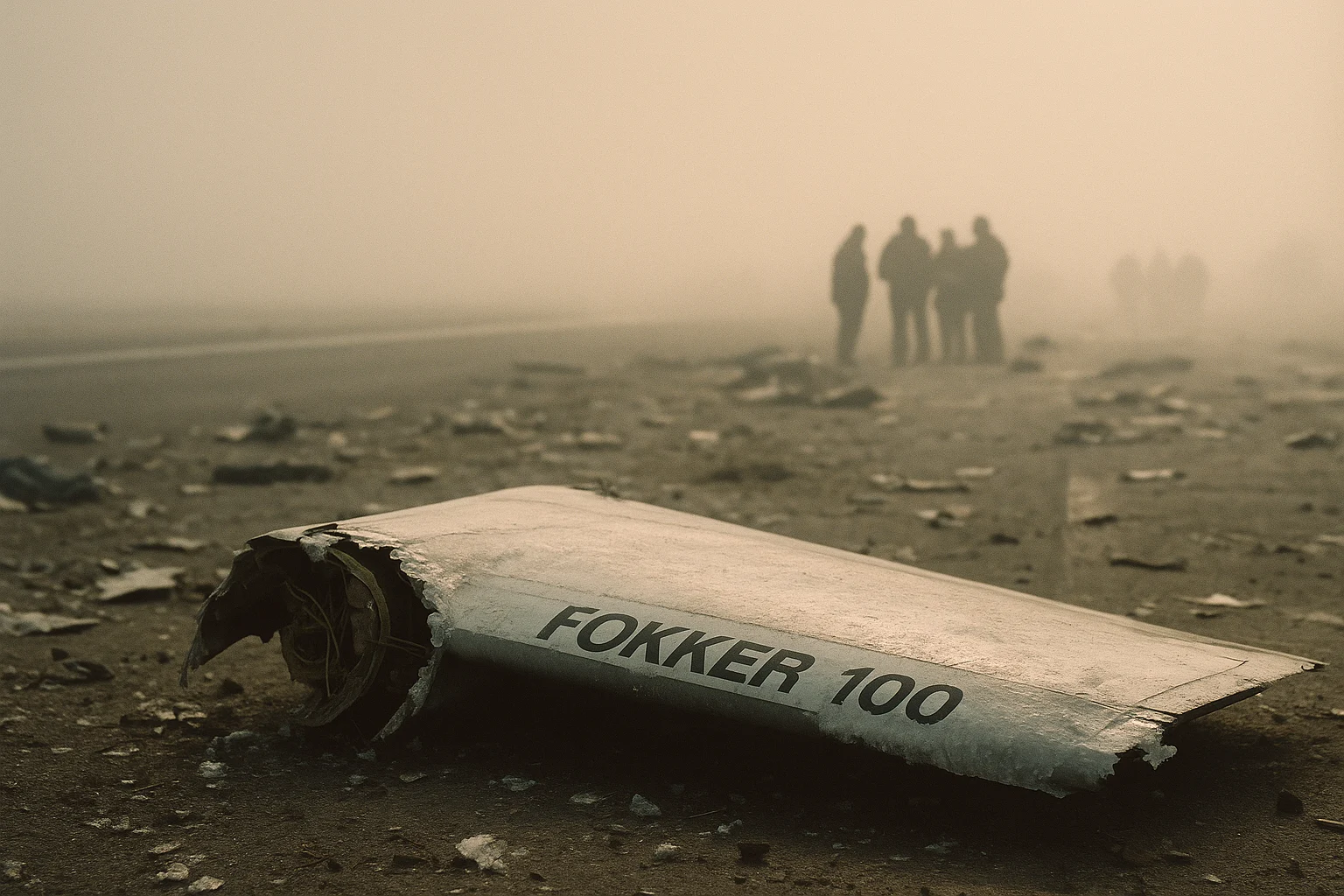
Palair Macedonian Airlines Flight 301 Crash
by: The Calamity Calendar Team
March 5, 1993
A Morning Shrouded in Fog
March 5, 1993, dawned with an ominous cloak of fog hanging low over Skopje Airport. The Macedonian capital, typically bustling with morning activity, seemed to hold its breath as if sensing the impending tragedy. Flight 301, operated by Palair Macedonian Airlines, was preparing to set off for Zurich, Switzerland—just another day-to-day routine for the company’s relatively new Fokker 100 plane.
The airport staff was busy with morning departures, the dense mist compounding their usual challenges. At 8:00 a.m., crews were optimistic, focused on ensuring the aircraft, carrying 97 souls—92 passengers and 5 crew members—was ready for the journey ahead. As the clock ticked forward, those on board fastened their belts, buckling in with the usual mix of anticipation and nonchalance typical of frequent flyers.
Embarking on a Routine Yet Fateful Journey
Palair Macedonian Airlines, a burgeoning regional player at the time, prided itself on its modern fleet. The Fokker 100, still pristine from its delivery just four months prior, was expected to provide a smooth ride. Yet, unbeknownst to those on board, a lurking hazard threatened this confidence—an unassuming, nearly invisible danger that accumulates quietly on cold days. Ice.
The standard pre-flight checks, though conducted, were overshadowed by the prevailing weather. Reports of insufficient de-icing procedures surfaced later, yet in the hurried minutes leading up to takeoff, such an invisible menace may have seemed negligible against the more immediate challenges of departing in low visibility.
Tragedy Unfolds on the Runway
As the aircraft's engines roared to life and it began its takeoff roll, passengers likely felt the familiar rush of anticipation. Yet, this was a path that would not lift them skyward. The plane struggled to maintain stability almost immediately after wheels lifted from the tarmac. Losing alignment with the runway's center, it veered precariously, failing to gain the altitude needed to escape the murky grasp of the fog below.
Within moments, the ominously quiet Macedonian morning was shattered. The Fokker grazed an embankment, its body contorting in ways aircraft are never meant to endure, before breaking apart—a painful punctuation mark to an ill-fated flight plan.
Thanks for subscribing!
Navigating Chaos and Desperation
After such devastation, urgency and desperation hung in the fog as heavily as the moisture in the air. Emergency responders converged on the scene with practiced haste, but the sight greeting them was sobering. Tangled debris were strewn across the field, the structure of the aircraft laid in ruin, and among it, the stirring signs of precious few survivors.
A mere 14 individuals, clinging tenaciously to life, emerged amidst the smoke and chaos. It was a testament to both grim circumstance and miraculous endurance. For the survivors, both passengers and crew, the path from wreckage to recovery would be long and complex, rife with both physical and emotional healing.
Searching for Answers Amidst Ruin
Amidst the sorrow and shock, the pressing need to uncover what had gone wrong beckoned investigators. As each piece of debris was turned over, a clearer picture began to form. The weather had not been merely an aesthetic footnote; it was central to the day’s tragedy. The fog, indicative of conditions ripe for icing, had shrouded a threat unseen and uncontrolled.
The investigation revealed that ice had indeed formed on the wings, severely compounding the aircraft’s ability to sustain lift. The de-icing procedures, which might have mitigated this risk, were left lacking, inadequately preparing the plane for takeoff under such conditions.
These findings would not go understated. The crash served as a somber reminder for the aerial community, and indeed Palair Macedonian Airlines itself, prompting changes in de-icing protocols across the industry, where safety measures took on new urgency and importance.
An Unyielding Legacy
Decades later, the lessons of Flight 301 persist in aviation training manuals and cold-weather safety briefings across the globe. Each page referencing this tragic event serves as a reminder—vigilance and preparation are not mere formalities but essential bulwarks against unforeseen calamities.
While those directly touched by this event carry on with their lives tempered by loss and survival, the broader aviation world continues to reflect on its impact. As cold fronts and fog banks continue to shape the landscape around airports, the memory of Flight 301 endures, a narrative etched in history designed to fortify the skies against nature's silent, icy threat.
Stay in the Loop!
Become a Calamity Insider and get exclusive Calamity Calendar updates delivered straight to your inbox.
Thanks! You're now subscribed.